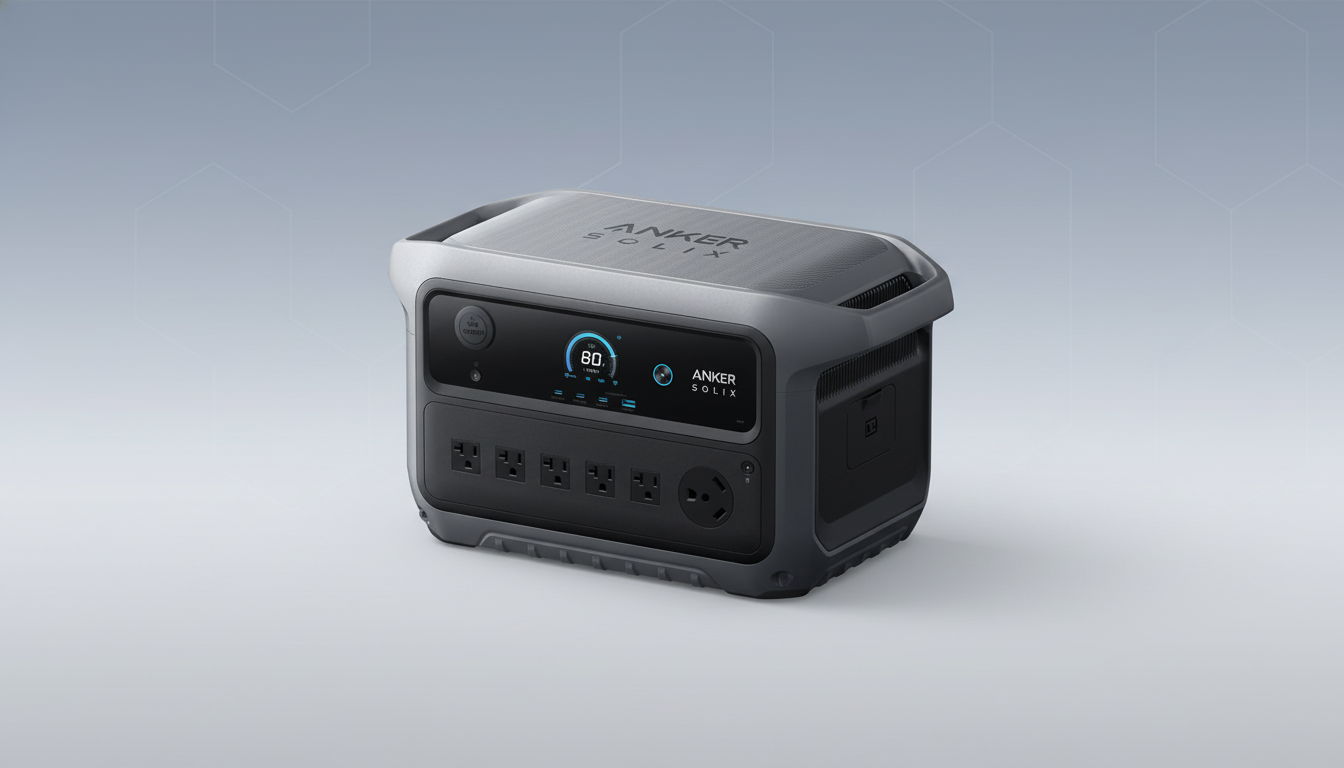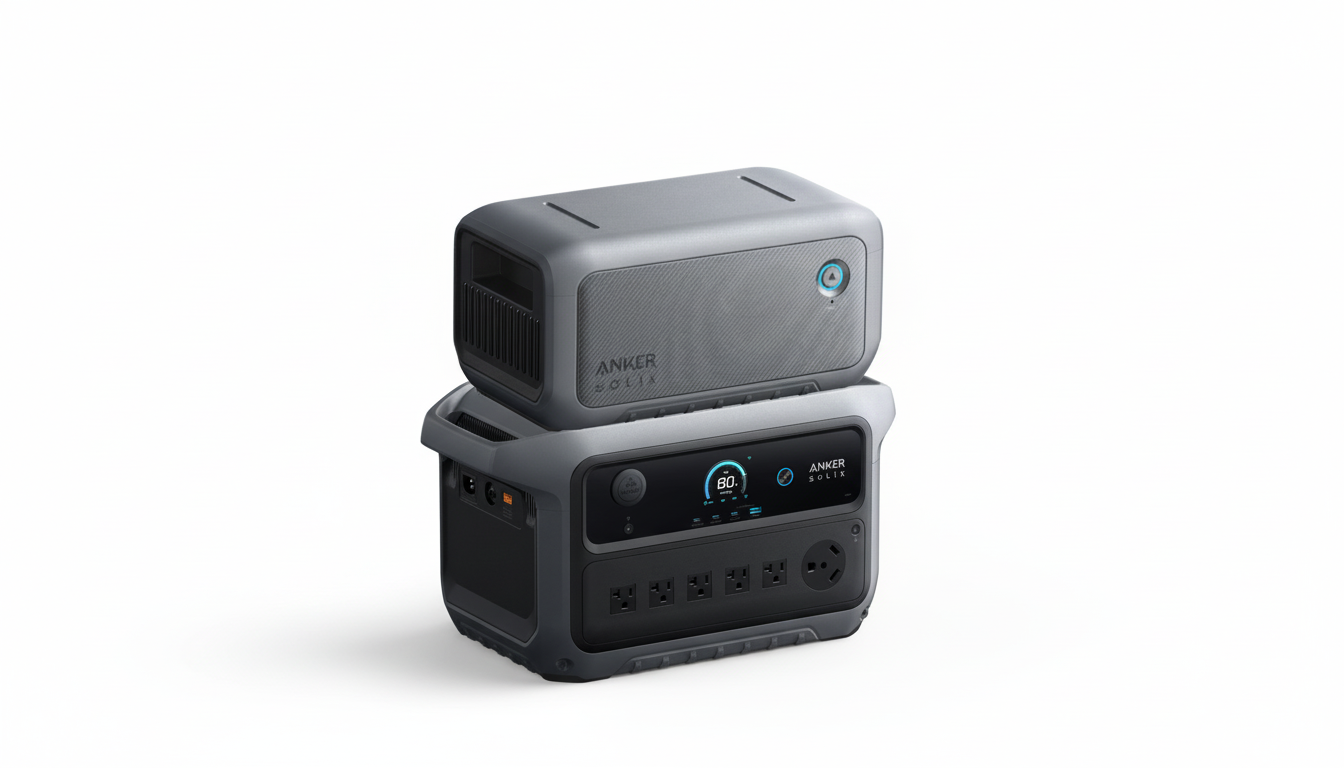Anker’s latest high-capacity portable power station just hit pavement with a head-turning discount, slashing the cost of the Solix C2000 Gen 2 from $1,499 to $799. And when we’re talking about a 47% reduction, that translates to $700 off a launch-ready unit meant for home backup, RVs, and off-grid weekends, pushing the price into aggressive territory below many rivals in the 2kWh class.
Portable power is no longer a special-purpose purchase. Some battery backup is necessary to ward off weather-related outages, which have been on the rise, according to the U.S. Energy Information Administration, and more households want a source of fume-free power that doesn’t sound like a lawnmower running in the backyard. The demand-oriented Solix C2000 Gen 2 from Anker enters the scene with pro-grade specs inside of a footprint that remains manageable for one person to relocate.

What Makes This Deal Stand Out Among Power Stations
At $799 for a 2,048 watt hour LiFePO4 pack, you’re spending about $0.39/watt-hour—nearly unheard of for any new-release model. In contrast, street pricing on similar-capacity units from the big boys is typically in the $0.60 to $1.00 per watt-hour range. That’s the sort of cost efficiency you don’t often see except out of clearance cycles, not brand-new hardware.
LiFePO4 chemistry is the other big value lever. Even Consumer Reports and battery safety experts have been pointing to LiFePO4 due to its excellent thermal stability and high cycle life. The new Anker Solix line is rated to retain capacity after thousands of charge cycles, providing buyers longer runways for both emergency preparedness and regular outdoor play.
Key Specs That Matter for the Solix C2000 Gen 2
The Solix C2000 Gen 2 combines a 2,048Wh LiFePO4 battery with an over/under 2,400W continuous inverter and up to around a 4,000W surge.
Translation: it can power up and run a lot of the high-draw essentials around your home that you might throw at a gas-free generator — full-size refrigerators, microwaves, sump pumps, some power tools — without tripping.
The connections are durable-feeling and well-designed. You’ve got five regular old AC outlets for appliances, a 30A outlet for RV users, and three USB-C ports (up to 140W of fast-charging laptop power) along with USB-A for your legacy gear. The device weighs approximately 41 pounds — heavier than a compact model, but reasonable for the class — and is only slightly larger than the brand’s 1kWh Solix C1000 while providing approximately twice the power.
- Five AC outlets for household appliances
- One 30A outlet for RV users
- Three USB-C ports (up to 140W fast charging)
- USB-A ports for legacy devices
For those keeping score at home, Anker’s line of power stations usually comes with advanced battery management systems and protections like over-voltage/over-current/temperature control. Retail buyers need to check the safety certifications like UL or its equivalent on the retail listing in order to ensure they meet common consumer battery standards.
Real-World Runtimes and Practical Everyday Use Cases
Anker says the C2000 Gen 2 can maintain a home Wi-Fi router for around 105 hours, and keep a standard refrigerator cool for about 32 hours — two important lifelines during grid outages. In household terms, that means keeping a CPAP machine and its humidifier humming along for multiple nights (exact run time depends on use of the humidifier), devices like phones and laptops topped up for days, and LED lighting shining bright through well over a weekend.
As a general rule, usable capacity divided by device wattage will provide ballpark runtime. Using 85% inverter efficiency as the base, a 40W CPAP machine might have something like 43 hours (perfectly comfortable), while a common garden-variety 10W LED lamp might run for hundreds of hours. Your performance can be affected by the device’s working efficiency, ambient temperature, and inverter load.

How It Compares With Rival 2kWh Power Stations
There are already competitors in the 2kWh range, such as EcoFlow’s Delta 2 Max and Jackery’s Explorer 2000-class units. Those models are tested performers with refined apps and speedy AC recharging, which can make them worth paying a price premium on a per-watt-hour basis often. Solix 型号C2000的第2代产品刚发布定价就占据极具优势地缩小了差距, 特良出特好的RV 220V,30A接口LiFePO4一次到位。
Anker’s latest generations will have fast AC recharging and MPPT-controlled solar input. Specific charge times will obviously vary based on wall circuitry and panel arrays, but the takeaway here is clear: rapid turnarounds from zero to full are the new table stakes in this category, and the C2000 Gen 2 matches up.
Who Should Buy It and What Users Will Benefit Most
Homeowners looking for quiet emergency power will love the blend of capacity and output headroom. RV owners and vanlifers have a 30A-friendly unit that can better transition you from campsite hookups to off-grid stays. It provides event pros and jobsite users with a compact, noise-free option to traditional small generators.
If you’ve been considering a first portable power station — or an upgrade from a 1kWh box — this discount does much to make the step up in capacity more feasible.
Buying Notes and Warranty Details for the C2000 Gen 2
IMG_4310-2-1
Confirm what comes in the box — AC cable, car charging cable, any solar adapters; also check and confirm the voltage window for your planned panels if you plan to add them. I have no regrets here.
Anker’s Solix series tends to have a longer-than-average warranty compared with previous generations, and that matters for devices designed to live on standby for years only to be put into full action when the lights go out.
And bottom line? At $799, you’re getting big-battery toughness, impressive surge power, and RV-ready outputs at a price point that changes our notion of what to expect from the 2kWh class.
It’s not often that you see deals this deep on hardware that was released just a few days ago.

